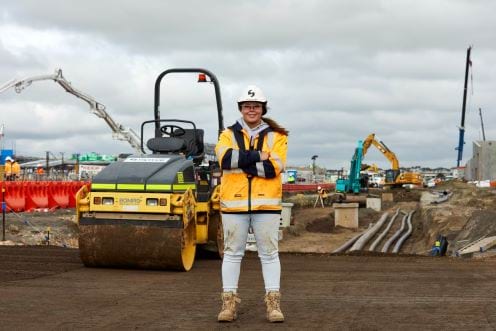Women’s equality and safety
Gender equality is essential to economic prosperity for all Victorians and gender inequality has significant economic costs to the state.
Gender equality is a precondition for the prevention of family violence and other forms of violence against women and girls. In Victoria, family violence continues to cost the economy more than $3.4 billion a year and constitutes 40% of police work13. There are considerable savings to be realised by reducing violence against women and girls. If Victorians are serious about ending violence against women, Victorians must begin by addressing gender inequality.
Women are far more likely to be in insecure work, reflecting the growing insecurity of the service industry and community services sector and the need for women to seek casual, part-time and flexible forms of work to help them balance work with parenting and caring responsibilities (that women still overwhelmingly have responsibility for).
By leveraging government purchasing power through the Framework, the Victorian Government is supporting the private sector to make progress on gender equality. Through this work, the government has seen industry adopt gender equality policies in the workplace and improve flexible and family violence leave arrangements. However, women continue to be underrepresented in non-traditional roles and industries such as construction.
The strongest contributor to this disparity is gender discrimination and the reinforcement of gender norms. Women have consistently comprised only 2% of field-based workers in the Australian male-dominated construction sector over the past 30 years. The Victorian Government has taken action to address gender imbalance in the construction industry to ensure women have the same access to secure work, economic security and adequate superannuation in comparison to men.
Building Equality Policy
On 1 January 2022, the Victorian Government launched the Building Equality Policy to improve gender equality in the building, infrastructure and civil engineering sectors.
The policy applies to all publicly funded construction projects valued at $20 million or more (excluding GST) or where the total budget allocated over the life of the project exceeds $20 million (excluding GST). The policy is being implemented via the Framework’s Women’s equality and safety objective.
There is strong demand for workers in male-dominated industries including construction. A failure to attract and equip women for careers in this industry leads to a loss of productivity gains by not drawing on the skills and capabilities of a large sector of the labour force. It also entrenches occupational segregation, with the potential to widen the gender pay gap and reduce economic security for women and their families.
Objectives
The Victorian Government is creating training and employment opportunities for women through government procurement on building, infrastructure, civil engineering and any other capital works projects.
The Victorian Government has set workforce and apprenticeship targets and site-based behaviour change requirements in the Building Equality Policy to create a more gender-inclusive industry. Over the 2022 and 2023 calendar years, the Building Equality Policy will be subject to a transitional compliance period on all applicable government procured projects.
Footnote 13: These figures have been extracted from ‘Safe and strong: A Victorian Gender Equality Strategy’ by the State of Victoria (Department of Premier and Cabinet), 2016.
Updated


